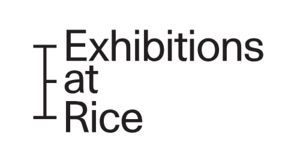October 28, 2024–February 14, 2025
MD Anderson and William T. Cannady Halls
6100 Main Street, MS-50
Houston, Texas 77005
United States
T +1 713 348 4864
rsa-public@rice.edu
Rice School of Architecture is pleased to announce The Sixth Sphere, an exhibition curated by Brittany Utting.
“The Sixth Sphere is the inaugural exhibition in our new curatorial program, Exhibitions at Rice, which aims to look at our world differently,” said Igor Marjanović, William Ward Watkin Dean of the Rice School of Architecture. “I am delighted that the exhibition of such planetary scope and ambition occupies this prominent spot, and I look forward to the global dialogues that it will imbue.”
Entangled within the earth’s five natural spheres—the atmosphere, biosphere, cryosphere, hydrosphere, and lithosphere—is a sixth: the technosphere. Identified by geologist Peter K. Haff as an emerging paradigm of the anthropocene, the technosphere includes the sites, institutions, and infrastructures of industrial production and extraction.
Architecture is part of the technosphere, hardening its systems and proliferating its forms. Encompassing factories and farmlands, ports and telecommunication networks, mines and landfills, highways and suburbs, the technosphere is more than just the accumulated material of the built environment. It is a planetary entanglement of physical infrastructures, geopolitical relations, and digital networks, enabling the continuous movement of matter, energy, and information.
While many aspects of everyday life depend on the technosphere—such as clean water, waste systems, and electrical grids—the technosphere’s exponential growth is actively destabilizing the earth’s other spheres. Its logic of extraction and expansion produces runaway planetary effects that exceed our capacity to control or alleviate, threatening not only our species but also the ability of all forms of life to flourish.
Despite its accelerating momentum, significant rifts exist within the technosphere. A system that cannot sustain its own processes without destroying the worlds upon which it depends demonstrates an underlying fragility. When we reconceptualize the technosphere as one of several entangled and coexisting worlds—rather than a global hegemonic order—new forms of spatial and environmental agency arise.
The Sixth Sphere explores how design can participate in systems of planetary interdependence and reciprocity. Gathering the contributions of 18 practices from around the world, projects are organized around three frameworks for understanding the relationship between the built environment and the technosphere: the molecular, the machinic, and the metabolic. The molecular explores the technosphere’s material worlds, the machinic reimagines the mechanisms by which it transforms the environment, and the metabolic examines the flows of resources that drive its processes. Through speculative designs, images, and drawings, The Sixth Sphere positions the technosphere as a collective site to reconstruct our social, technical, and climate futures.
Exhibitors: (AB)NORMAL, aldayjover architecture and landscape, Alexandra Arènes, Andrés Jaque / OFFPOLINN + Miguel Mesa del Castillo, Debbie Chen, Common Accounts, DESIGN EARTH, Dogma, GRANDEZA STUDIO, HOME-OFFICE, Olalekan Jeyifous, Studio Muoto, NEMESTUDIO, Present Future, Curtis Roth, TAKK, Territorial Agency, Z4A Architects.
Graphic Design: Studio Lin.
Sponsors: Graham Foundation for Advanced Studies in the Fine Arts, Rice University Office of Research.
Exhibition catalog
The Sixth Sphere will be available for purchase and digitally accessible on open access. The catalog includes a foreword, “Drawing the World,” by Igor Marjanović, and an essay, “Unruly Spheres,” by Brittany Utting.
Exhibitions at Rice
As a curatorial program of the Rice School of Architecture, Exhibitions at Rice uses the lens of design research to look at the world differently. Mobilizing a full spectrum of architectural representation—including drawing, imaging, making, and prototyping—this program weaves together scholarly inquiry, visual experimentation, and public engagement. Across all scales, from objects to buildings, cities, and the planet, Exhibitions at Rice engages the discipline of architecture as a cultural practice with a civic mandate, creating new discourses for both local and global audiences.


